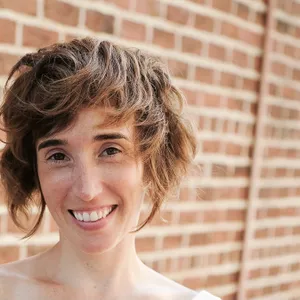YOUR IMPACT | YOUR SMITHSONIAN
Sustaining People and the Planet
What do you know about what you eat? Where does it come from? How was it grown, fished or harvested, and by whom? From Virginia farmlands to Alaskan headwaters and Panamanian shores, the Smithsonian is working with scientists, farmers and fishermen to illuminate the connections between food and sustaining a diverse planet—working with nature to protect and nourish the land, streams and oceans that feed us.
:focal(900x600:901x601)/https://tf-cmsv2-smithsonianmag-media.s3.amazonaws.com/filer_public/e4/58/e4587e60-785d-4418-b938-ff43dffecc7f/fisherman_in_waders-4x6.jpg)
What do you know about what you eat? Where does it come from?
How was it grown, fished or harvested, and by whom?
From Virginia farmlands to Alaskan headwaters and Panamanian shores, the Smithsonian is working with scientists, farmers and fishermen to illuminate the connections between food and sustaining a diverse planet—working with nature to protect and nourish the land, streams and oceans that feed us.
/https://tf-cmsv2-smithsonianmag-media.s3.amazonaws.com/filer_public/11/c3/11c34255-e40c-4d1c-83ef-7ecb585263e3/vwl_polinator_survey_training_kinloch_62522_credit_hugh_kenny-4x6.jpg)
Bee-Friendly Beef
Jeremy Engh comes from a long line of beef cattle farmers in Remington, Va., about 60 miles from the nation’s capital. Over generations, he has witnessed how agricultural practices such as overgrazing, pesticide use and planting non-native grasses have disrupted the land’s delicate ecological balance.
Since 1970, more than 700 million grassland birds have been lost nationwide, and pollinators—bees, beetles, moths and butterflies that sustain the land’s native grasses and enrich the soil—are disappearing. Engh owns Lakota Ranch, one of six farms partnering with Virginia Working Landscapes, a project of the Smithsonian’s National Zoo and Conservation Biology Institute, to reintroduce native North American prairie grasses and wildflowers—safe and healthy for cattle—to his pasturelands. Diverse plant life brings back pollinators, stimulating the biodiversity that fuels the nation’s
food systems.
“You can’t deny the success,” Engh says. “The way we’ve managed our grasses has led to cleaner water. Dung beetles are back. Beavers are back.” Erin Shibley and Amy Johnson lead Virginia Working Landscapes’ “bee-friendly beef” project.
The two scientists hope the results demonstrate how small-scale local conservation efforts can help restore declining species while promoting sustainable farming practices that benefit both farmers and biodiversity.
For more than a decade, Virginia Working Landscapes has worked with citizen scientists—farmers, teachers and community members—conducting surveys, collecting samples and compiling data. Farmers like Engh and his fellow participants in the bee-friendly beef project at Oxbow Farm, Hidden Creek Farm, Over Jordan Farm, Blackrock Farm and the Clifton Institute are critical to the Smithsonian’s education and outreach, sharing their experiences and the changes they have seen on their farms.
Learn more: vaworkinglandscapes.org/conservation-science/projects/bee-friendly-beef/
Watch a short documentary about Virginia Working Landscapes: https://www.youtube.com/watch?v=9eIfzVoploM
/https://tf-cmsv2-smithsonianmag-media.s3.amazonaws.com/filer_public/5b/74/5b745189-768d-4f53-b033-a8b9181d9c70/amy_johnson_virginia_working_landscapes_old_whitewood_credit_hugh_kenny-4x6.jpg)
Salmon: The Heartbeat of Alaska
In Homer, Alaska, salmon is a way of life—but human activity is disrupting the balance among people, land, water and fish. Fisherman Lynn Whitmore has traversed Alaskan lands and streams for 53 years: “We’ve watched shrimp disappear from our bay. We’ve watched crab disappear. We’ve watched clamming drop off and almost disappear. Salmon are now fewer and trending smaller.” The Salmon and People Project, a partnership between the Smithsonian Environmental Research Center, the Kachemak Bay National Estuarine Research Reserve and others, is working with locals and decision makers on making informed choices to steward the complex, fragile ecosystems that sustain salmon populations.
For example, Smithsonian researcher Dennis Whigham, Coowe Walker of the Kachemak Bay reserve, Ryan King of Baylor University and Mark Rains of the University of South Florida discovered that tiny headwater streams on the southern Kenai Peninsula harbor immense numbers of baby salmon. Fish are nourished by nutrients that leak into the water from the surrounding soil and plants—such as alder plants, which feed nitrogen into the water through their roots.
/https://tf-cmsv2-smithsonianmag-media.s3.amazonaws.com/filer_public/a3/48/a348f28b-8f55-432e-984d-9c10d282a4b9/img_0127-min-4x6.jpg)
Protecting and cultivating alder plants around those streams is essential for salmon to grow and make their way downstream. This is just one of the project’s strategies. Partnerships with Alaska Native tribes help educate Smithsonian scientists and locals about sustainable fishing practices used for generations. Walker and Marie McCarty, executive director of the Kachemak Heritage Land Trust, lead tours of headwater streams for commercial and sport fishermen so they can see how land, soil, fish and people are connected. The Smithsonian’s trusted name and scientific heft, combined with local knowledge and established relationships, “is a powerful thing,” says Walker. “It’s useful, and people really care—this work is really important to the communities that depend on salmon.”
Learn more: global.si.edu/projects/salmon-and-people-project
Unnatural Selection
Thousands of years ago, in what is now known as Panama’s Bocas del Toro lagoon, humans fished out the first Caribbean fighting conch. Since then, millions of fighting conch have been harvested for ceviche or fritters—and as a result, the conch’s DNA is changing. Aaron O’Dea of the Smithsonian Tropical Research Institute (STRI) in Panama studies conch found in fossil beds and archeological middens—the “trash heaps” of earlier people—to piece together humanity’s impact on wild food over millennia. While exploring the lagoon, O’Dea noticed that conch fossils found in prehistoric middens were larger than those we eat today. Prehuman fossils were larger still. Human harvesting had gradually driven the conch smaller and smaller.
“Unnatural selection” fueled by human consumption can transform and endanger entire species—and the people whose health and livelihoods depend upon them. “People naturally seek out the biggest conch to feed their families,” says O’Dea. “Over time, genes for diminutive conch become more common. Today’s conch have about 66% less meat than their ancestors.”
/https://tf-cmsv2-smithsonianmag-media.s3.amazonaws.com/filer_public/eb/fb/ebfbbd04-ff7a-421e-9bf9-c0621880e74d/conch-4x6.jpg)
Tropical seagrass beds of Panama are uniquely suited for studying how complex, deeply interconnected ecosystems respond to changes in the environment. Alexis Sullivan, a short-term fellow at STRI from Pennsylvania “We have a chance to recover. If conch size increases, that’s a win for conch and for the people who rely on it.”
O’Dea and Sullivan’s research is inspiring conversations about how to protect conch and other wildlife impacted by people over time, from policy changes to management tools local fishermen can adopt to help conch size rebound. “We have a chance to recover,” says O’Dea. “If conch size increases, that’s a win for conch and for the people who rely on it.” Valerie and Bill Anders and Panama’s Secretaría Nacional de Ciencia, Tecnología e Innovación, provided support for this work.
Learn more: dx.doi.org/10.1098/rspb.2014.0159
Published October 2022 in IMPACT Vol. 8 No. 3
Everything you read about in IMPACT is made possible in part thanks to support from lifelong learners like you. Donate today and power Smithsonian's mission to create and share knowledge with everyone, everywhere.
Want more stories about how the Smithsonian impacts your world? Join our community of curious, passionate knowledge-seekers from across the globe.


